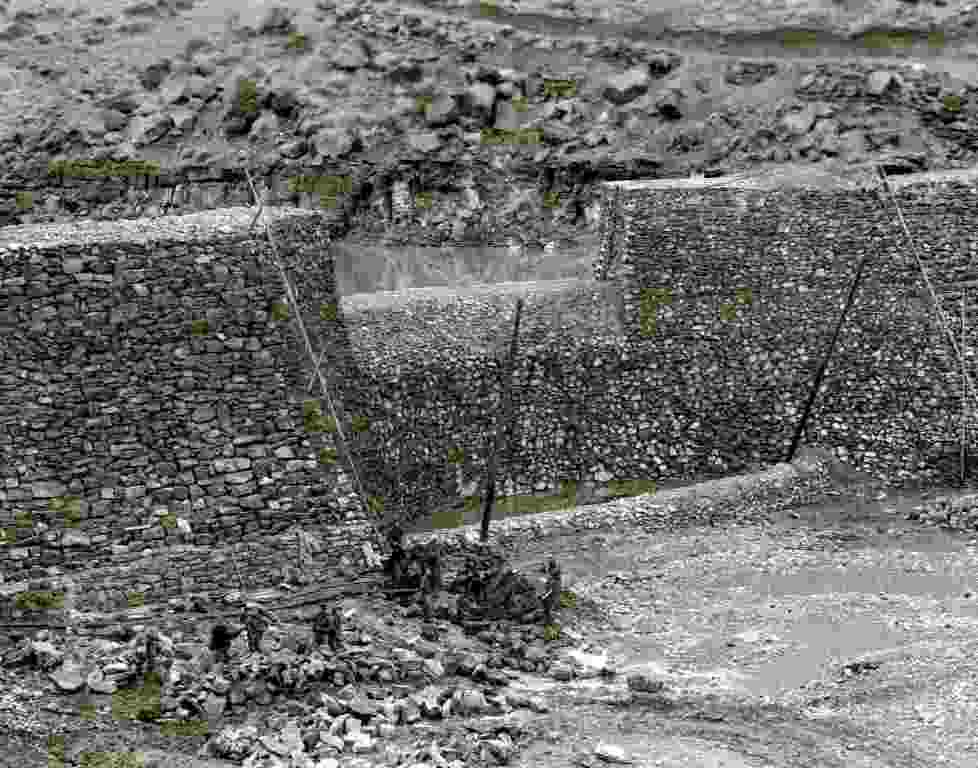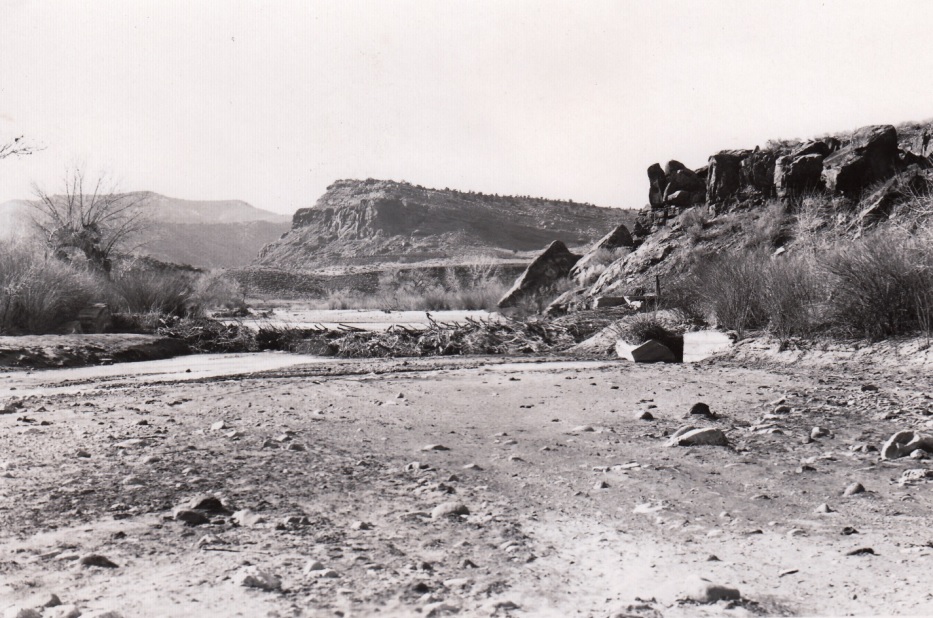
WASHINGTON COUNTY HISTORICAL SOCIETY (Washington County, Utah)
SHEM DAM PRECURSOR DAM
on the Santa Clara River/Creek
LOCATION
This dam was located 600 feet upstream of the current Shem Dam.HISTORY
The Paiutes used water from the Santa Clara River to farm long before the Mormons arrived. They frequently used water from dams built by the beavers.Not long after the Indian Mission arrived in Santa Clara, the Mormon missionaries, with help from the local Paiutes, constructed a dam across the Santa Clara to divert water to newly turned fields.
Starting in 1909, discussions started on creating a dam on the Santa Clara River to divert water for irritation. Starting in 1916, the new dam was built. It was used to divert water into the canal
of the St. George and St. George and Santa Clara Bench Irrigation Company.
It was made of brush and straw, covered with sand. While it served its function, it was regularly damaged
by flooding and frequently in need of replacement or major repairs.
It is not clear when the water users of the St. George and Santa Clara Bench Irrigation Company first considered replacing the simple diversion dam at Shem with a more durable structure, but by early 1933 they were ready to listen to a proposal by Luther M. Winsor, an engineer with the U.S. Department of Agriculture, Bureau of Agricultural Engineering, to build flood-control features in the Santa Clara River, both to protect their canal and to stop the washing away of valuable farmland adjacent to the river.
PHOTOS

WCHS-03900 The remains of the original sand & brush 1916 dam at Shem
REFERENCES
Historic American Engineering Record, Shem Dam (Winsor Dam), HAER No. UT-96Prepared by Scott O'Mack, William Self Associates, Inc.,
for the USDA Natural Resources Conservation Service (NRCS)
March 2016, 96 Pages (see pp. 13, 17, 22-23)
[Large file, so this may take a while to load]
S. C. B. Irrigation Project Completed
Washington County News, March 30, 1916